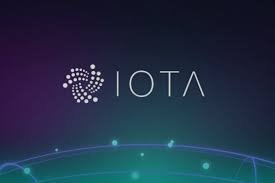Five cryptocurrencies that could become the next Bitcoin

- Bitcoin Cash (BCH)
Bitcoin Cash was forked from the original Bitcoin in August 2017, and currently has a market cap of $28 billion (£20 billion). The goal was to create a newer version of Bitcoin with a larger block size, as the original was limited to 1MB, which in turn limited the network to processing Bitcoin transactions at only seven per second, a severe restriction as Bitcoin increases in popularity.
The creators view Bitcoin Cash as the next step on in terms of the evolution of the virtual currency, offering the promise of faster peer-to-peer transactions, with lower processing fees. The ultimate goal of Bitcoin Cash is to be actually useful as a digital currency for purchases in the real world.

- Litecoin (LTC)
Litecoin dates back to 2011, and was created by ex-Google engineer Charlie Lee. It is often thought of as the ‘little brother’ to Bitcoin – a kind of silver to Bitcoin’s gold, if you will – with a current market cap of $10 billion (£7 billion), and a hard limit of 84 million Litecoin ever to be issued.
Like Bitcoin, Litecoin is a decentralized cryptocurrency that allows for peer-to-peer transactions. However, Bitcoin is based on the SHA-256 algorithm, while Litecoin uses the Scrypt algorithm, which runs considerably faster, with a target of 2.5 minutes for each new Litecoin block (Bitcoin takes 10 minutes for each new block).
The result is that Litecoin boasts faster transactions, and at a lower cost compared to Bitcoin, which are certainly favorable points when it comes to Litecoin’s potential growth.
 !
!
- Monero (XMR)
Monero is an open source, crowdfunded approach to cryptocurrency, which dates back to July 2012. It was originally called Bitmonero, but this was subsequently shortened to the current name. Monero is a decentralized virtual currency based on the CryptoNote algorithm, with a new block added every two minutes, meaning it offers faster transactions than Bitcoin.

- IOTA (MIOTA)
IOTA is getting some attention these days, following its release as an alternative cryptocurrency back in 2014. The name derives from ‘Internet Of Things Application’, and this virtual currency was developed for a future where IoT devices trade their resources and services directly with each other, and IOTA is used for the payment. It’s a cryptocurrency which was designed to offer efficient, low-cost microtransactions.
Other cryptocurrencies are based on the blockchain, with recent transactions bundled into the new block. IOTA takes an alternative approach via a Directed Acrylic Graph (DAG) which is called Tangle.

- Cardano (ADA)
Cardano is a relative newcomer, having been released in 2017 following a lengthy ‘initial coin offering’ from 2015. Considered a third-generation cryptocurrency, its name comes from Gerolamo Cardano, a Renaissance figure who was an Italian mathematician and physician. Its founder is Charles Hoskinson, who was a co-founder of Ethereu
Thus far, Cardano certainly seems to be doing something right, as it has quickly become the fifth biggest cryptocurrency going by market cap value (behind Bitcoin, Ethereum, Ripple and Bitcoin Cash respectively).
✅ @aj786, I gave you an upvote on your post! Please give me a follow and I will give you a follow in return and possible future votes!
Thank you in advance!
yes ok
It Is True Good Thinking. Helpful your post.
good bro
i think bitcoin is one an only coin who bits every crypto coin